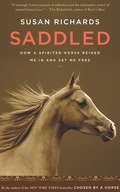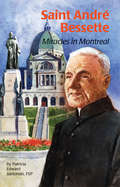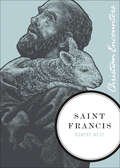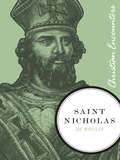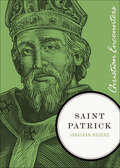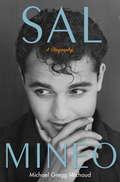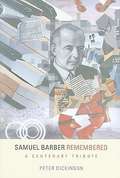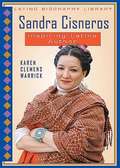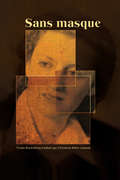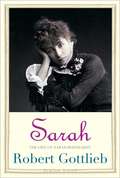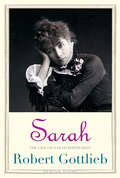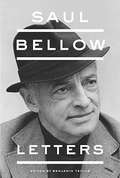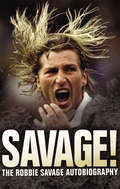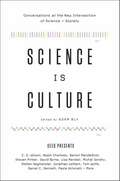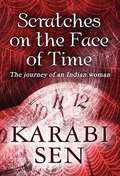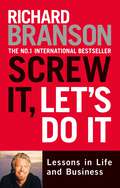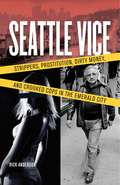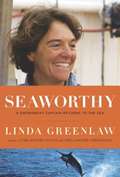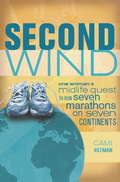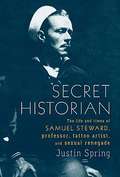- Table View
- List View
Saddled: How a Spirited Horse Reined Me In and Set Me Free
by Susan RichardsThe New York Times bestselling author of Chosen by a Horse explains how caring for an animal taught her to care for herself. One day, at the age of thirty-one, Susan Richards realized that she was an alcoholic. She wrote it down in her journal, struck by the fact that it had taken nine years of waking up hung-over to name her illness. What had changed? Susan had a new horse, a spirited Morgan named Georgia, and, as she says: &“It had something to do with Georgia. It had something to do with making a commitment as enormous as caring for a horse that might live as my companion for the next forty years. It had something to do with love.&” Every day begins with a morning ride. Every day Susan lives a little more and thinks about her mistakes a little less. Every day she learns a little more from Georgia, the kind of horse who doesn&’t go in for indecision, who doesn&’t apologize for her opinions, and who isn&’t afraid to be herself. In Georgia, Susan finds something to draw her back to herself, but also something to keep her steady and focused, to teach her about stepping carefully in unknown territory, to help her learn again about balance. This is a memoir about the power of animals to carry us through the toughest times of our lives—about the importance of constancy, the beauty of quiet, steadfast love, the way loving a good (and sometimes bad!) animal can keep you going. It&’s a wonderful story for Susan&’s (and Georgia&’s) fans, and for anyone who has ever loved an animal enough to keep on living.
Saint André Bessette
by Patricia Edward JablonskiAn ordinary Brother of Holy Cross, Saint André Bessette spent most of his life answering the door for his religious community. Through his extraordinary devotion to Saint Joseph and his prayers for those in need, thousands of people were miraculously healed and helped. Inspired by God to build the Oratory of Saint Joseph, Brother André Bessette is beloved in his native Canada and beyond. Saint André Bessette was canonized by Pope Benedict XVI in October 2010.
Saint Francis (Christian Encounters)
by Robert WestThis inspiring biography explores the life and faith of Saint Francis of Assisi, the thirteenth-century Italian mystic who founded the Franciscan order.Born to a wealthy cloth merchant in Assisi, Italy, Francis didn’t seem destined for the life of prayer and poverty that he chose. But Francis took the gospel literally and followed all that Jesus said and did without limit. His devotion led to a life filled with miracles and wonders.Bankrolled by his father, and blessed with natural good looks and personality, Francis indulged in worldly pleasure as a young man. He had a ready wit, sang merrily, and delighted in fine clothes and showy display. But serious illness brought Francis to see the emptiness of his frolicking ways and led him to a life of prayer and unbridled devotion to Scripture. Francis gave over all his possessions to the poor and embraced a life of simplicity and poverty, transforming him from a self-centered youth to a man living for God and a model of complete obedience. This biography brings his incredible transformation vividly to life.
Saint Nicholas
by Joe WheelerYou know him as the rotund merry-maker in the red suit. Butset aside the childhood myth. In this portrait, you'll encounter the true St.Nicholas, a figure revered for his astonishing miracles and a humility thatredirected all attention to God's glory. You'll be amazed to find St. Nicholasalways turning up at just the right time--rescuing sailors from the certaindeath of a violent sea, saving three young women from a life of prostitution,and guarding an infant from the burns of a boiling bath.A tireless defender of God's truth and His people, St.Nicholas's wonderful and mysterious deeds illustrate, time and again, a heartfor the weak, the poor, and the endangered--truly "the patron saint ofpractically everybody" and one of the most fascinating figures in all ofChristian history.We learn about life through the lives of others. Their experiences,their trials, their adventures become our schools, our chapels, our playgrounds.Christian Encounters, a series of biographies from Thomas Nelson Publishers,highlights important lives from all ages and areas of the Church through proseas accessible and concise as it is personal and engaging. Some are familiar faces.Others are unexpected guests. Whether the person is D.L. Moody, Sergeant York, SaintNicholas, John Bunyan, or William F. Buckley, we are now living in the worldthat they created and understand both it and ourselves better in the light oftheir lives. Their relationships, struggles, prayers, and desires uniquelyilluminate our shared experience.
Saint Patrick (Christian Encounters)
by Jonathan RogersIn this Christian Encounter Series biography, author Jonathan Rogers explores the life of Saint Patrick: slave, shepherd, and courageous missionary.Patrick was born the son of privilege and position, but he was only a teenager when he was taken from his home in Roman Britain by marauders and sold into slavery in Ireland. Despite his terrible circumstances, young Patrick did not give way to despair. As he worked as a shepherd in the pastures of his new owner, he kindled the faith he&’d inherited from his family and eventually escaped to freedom. Then, after returning home, he experienced a dream that changed everything: God wanted him to go back and take the Gospel to the country of his captors.Patrick heeded the call. Both humble enough to minister to beggars and bold enough to confront kings, Patrick led the Irish through his brave and compassionate service into the Christian faith and baptized thousands. Separating the many myths from the facts, Jonathan Rogers weaves a wonder-filled tale of courage, barbarism, betrayal, and hope in God&’s unceasing faithfulness. Countless miracles have been attributed to Saint Patrick, but perhaps one of the simplest and most amazing is that he won the hearts and souls of the same fierce and indomitable people who had enslaved him.
Sal Mineo: A Biography
by Michael Gregg MichaudSal Mineo is probably most well-known for his unforgettable, Academy Award-nominated turn opposite James Dean in Rebel Without a Cause and his tragic murder at the age of thirty-seven. Finally, in this riveting new biography filled with exclusive, candid interviews with both Mineo's closest female and male lovers and never-before-published photographs, Michael Gregg Michaud tells the full story of this remarkable young actor's life, charting his meteoric rise to fame and turbulent career and private life. One of the hottest stars of the 1950s, Mineo grew up as the son of Sicilian immigrants in a humble Bronx flat. But by age eleven, he appeared on Broadway in Tennessee Williams's The Rose Tattoo, and then as Prince Chulalongkorn in the original Broadway production of The King and I starring Yul Brynner and Gertrude Lawrence. This sultry-eyed, dark-haired male ingenue of sorts appeared on the cover of every major magazine, thousands of star-struck fans attended his premieres, and millions bought his records, which included several top-ten hits. His life offstage was just as exhilarating: full of sports cars, motor boats, famous friends, and some of the most beautiful young actresses in Hollywood. But it was fourteen-year-old Jill Haworth, his costar in Exodus the film that delivered one of the greatest acting roles of his life and earned him another Academy Award nomination and a Golden Globe win with whom he fell in love and moved to the West Coast. But by the 1960s, a series of professional missteps and an increasingly tumultuous private life reversed his fortunes. By the late sixties and early seventies, grappling with the repercussions of publicly admitting his homosexuality and struggling to reinvent himself from an aging teen idol, Mineo turned toward increasingly self-destructive behavior. Yet his creative impulses never foundered. He began directing and producing controversial off-Broadway plays that explored social and sexual taboos. He also found personal happiness in a relationship with male actor Courtney Burr. Tragically, on the cusp of turning a new page in his life, Mineo's life was cut short in a botched robbery. Revealing a charming, mischievous, creative, and often scandalous side of Mineo few have known before now, Sal Mineo is an intimate, moving biography of a distinctive Hollywood star.
Salma Hayek: Actress, Director, and Producer
by Kerrily SapetSalma Hayek is the first and only Mexican actress to be nominated for an Academy Award for Best Actress. She has broken down racial barriers in Hollywood, establishing herself as the most influential Hispanic woman in the movie industry. A Mexican actress of Lebanese and Spanish descent, Salma has faced racism and stereotypes throughout her life. But she is proud of her multi-cultural heritage, and has worked hard to become a respected actress, producer, and director. With her production companies, Salma also provides opportunities for other Latin-American actors. However, her movies tell stories that appeal to people of all races and cultures. This book tells Salma's story. It offers a look at her early struggles as a biracial actress in the U.S. and her rise to fame. She has overcome great challenges to achieve success. A glamorous and talented star, Salma plans to keep following her dreams for years to come.
Samuel Barber Remembered: A Centenary Tribute
by Peter DickinsonSamuel Barber is one of America's most popular classical composers. His widely beloved works include "Adagio for Strings" and Knoxville: Summer of 1915 . The main source for Samuel Barber Remembered: A Centenary Tribute is a panoply of vivid and eminently readable interviews by Peter Dickinson for a BBC Radio 3 documentary in 1981. The interviewees include Barber's friends, fellow composers, and performers, notably Gian Carlo Menotti, Aaron Copland, William Schuman, Virgil Thomson, soprano Leontyne Price, and pianist John Browning. The book also includes three of the very few interviews extant with Barber himself. Dickinson contributes substantial chapters on Barber's early life and on Barber's reception in England. The book has a foreword by the distinguished composer and admirer of Barber, John Corigliano. Peter Dickinson, British composer and pianist, has written or edited numerous books about twentieth-century music, including CageTalk: Dialogues with and about John Cage (University of Rochester Press) and three books published by Boydell Press: The Music of Lennox Berkeley; Copland Connotations; and Lord Berners: Composer, Writer, Painter.
Sand
by John Kinsella Robert DreweA collection of prose, poetry, and memoir, this collaboration celebrates the profound effect environment has on our stories, assumptions, and geographical reckonings, just as it evokes childhood nostalgia and a sense of place. In a dialogue of perceptions, two of Australia’s foremost authors explore a common geography and memories—both cultural and personal—as they consider the theme of “sand” from intimate, geological, and historical points of view.
Sandra Cisneros: Inspiring Latina Author
by Karen Clemens WarrickDiscusses the life of Latina author Sandra Cisneros, including her childhood in Chicago, her path to becoming an accomplished author, and her work in the Latino community.
Sans masque
by Truda RosenbergSans masque fait la chronique des expériences exceptionnelles de Truda Rosenberg, une jeune Juive qui a vécu pendant la Seconde Guerre Mondiale. La seule survivante de sa famille, Rosenberg témoigne l’adversité et la cruauté humaine endurée par des millions de Juifs à travers l’Europe. De sa fuite de Belzec, un camp de concentration où 500 000 juifs ont été abattus, aux multiples confrontations avec les autorités Nazis, durant lesquelles elle a dû déployer de nombreuses fausses identités, au ghetto de Varsovie, où elle contribua à une insurrection, l’auteure raconte une série d’épisodes qui altéra sa vie pour toujours. Les épisodes qui regroupent le volume illustrent combien il est difficile de retrouver son identité lorsque celle-ci fut brutalement piétinée. Le récit est une attestation à la résilience de la dignité humaine, à sa capacité d’adaptation aux pires circonstances et surtout à sa soif de triomphe. Au travers de cet ouvrage, l’auteur entend contribuer aux archives collectives qui témoignent du génocide systématique de son peuple pendant la Seconde Guerre Mondiale et célébrer la décision la plus importante de sa vie – celle de ressaisir ses racines et sa culture.
Sarah: The Life of Sarah Bernhardt
by Robert GottliebSarah is the first English-language biography to appear in decades. Brilliantly, it tracks the trajectory through which an illegitimate and scandalous daughter of a courtesan transformed herself into the most famous actress who ever lived, and into a national icon, a symbol of France.
Sarah: The Life of Sarah Bernhardt
by Robert GottliebEverything about Sarah Bernhardt is fascinating, from her obscure birth to her glorious career--redefining the very nature of her art--to her amazing (and highly public) romantic life to her indomitable spirit. Well into her seventies, after the amputation of her leg, she was performing under bombardment for soldiers during World War I, as well as crisscrossing America on her ninth American tour. Her family was also a source of curiosity: the mother she adored and who scorned her; her two half-sisters, who died young after lives of dissipation; and most of all, her son, Maurice, whom she worshiped and raised as an aristocrat, in the style appropriate to his presumed father, the Belgian Prince de Ligne. Only once did they quarrel--over the Dreyfus Affair. Maurice was a right-wing snob; Sarah, always proud of her Jewish heritage, was a passionate Dreyfusard and Zolaist. Though the Bernhardt literature is vast, Gottlieb'sSarah is the first English-language biography to appear in decades. Brilliantly, it tracks the trajectory through which an illegitimate--and scandalous--daughter of a courtesan transformed herself into the most famous actress who ever lived, and into a national icon, a symbol of France.
Saul Bellow
by Benjamin Taylor Bellow SaulA never-before-published collection of letters-an intimate self- portrait as well as the portrait of a century. Saul Bellow was a dedicated correspondent until a couple of years before his death, and his letters, spanning eight decades, show us a twentieth-century life in all its richness and complexity. Friends, lovers, wives, colleagues, and fans all cross these pages. Some of the finest letters are to Bellow's fellow writers-William Faulkner, John Cheever, Philip Roth, Martin Amis, Ralph Ellison, Cynthia Ozick, and Wright Morris. Intimate, ironical, richly observant, and funny, these letters reveal the influcences at work in the man, and illuminate his enduring legacy-the novels that earned him a Nobel Prize and the admiration of the world over. Saul Bellow: Letters is a major literary event and an important edition to Bellow's incomparable body of work. .
Savage!: The Robbie Savage Autobiography
by Robbie Savage Janine SelfRobbie Savage could have been just another Manchester United reject. Instead, he used the Old Trafford scrapheap as a springboard to become one of the most instantly recognisable footballers in the Premier League, despite being told by Sir Alex Ferguson he was not good enough to stay in the class of '92 alongside David Beckham, Paul Scholes, Ryan Giggs, Nicky Butt and Gary Neville.For the last 16 years, Savage has carved out a reputation as a hard man and wind-up merchant with an unerring ability to grab a headline. From deliberately getting Tottenham's Justin Edinburgh sent off in a Wembley Cup final to the 'Jobbiegate' row with referee Graham Poll and the bust-ups with John Toshack, Rio Ferdinand, Graeme Souness and Paul Jewell, the list is endless.Yet numerous footballing legends will testify to the skill of the midfielder, who has starred for Crewe, Leicester, Birmingham, Blackburn and Derby and won 39 international caps for Wales. Behind the long blond hair, the Armani tattoo and the flamboyant cars, Savage has always been the heartbeat of his team.Savage! provides a unique insight into the extraordinary life of an elite sportsman, a colourful character and loving family man. Love him or loathe him, Robbie Savage's story is a remarkable one.
Saved by Her Enemy
by Don Teague Rafraf BarrakFor her entire life, Rafraf, a devout Muslim, had been told that Americans were the enemy. Her understanding of the world, of her place in it, and of the United States had been steeped in the culture of Iraq under the rule of Saddam Hussein. Yet, in the midst of insurgents attempting to kidnap and kill her, she found herself on the receiving end of lifesaving help from those she considered her enemies.Rafraf suddenly finds herself living with a Christian family in the Bible Belt of America. Nothing had prepared her for this new reality--the life of a college student in a vastly foreign culture, in a community as far from her expectations as she could have imagined, and in a family that opens their hearts to enfold her.Saved by Her Enemy is a riveting journey of two very different people from opposite sides of the world, of faith, of experience, and of expectations. The dramatic intersection of their lives and their journey together is an inspiration to those who have ever felt there was more to life than the world they knew. A young Iraqi woman, an American war correspondent, and a true tale of friendship, faith, and family against the backdrop of war and the collision of culturesThis is a story of a very unlikely friendship--between American war correspondent Don Teague and Rafraf Barrak, an Iraqi college girl who won a job as a translator for NBC during the early months of violence in the wake of the American invasion of Iraq.While covering a story together, the two were nearly killed by a bomb, an experience that created a bond between them that led them down a path neither could have imagined.What follows is a story of transformation, as Rafraf--from a devout Muslim family--becomes the target of terrorist threats to kidnap and murder her. Don and his fellow correspondents mobilize to help save her life and suddenly Rafraf finds herself on the receiving end of an offer for safety and a new life in the United States. Dramatically transplanted from the streets of Iraq to the Bible Belt of middle America, Rafraf finds everything that she knew--or thought she knew--about herself, her values, her world, even faith and family, turned upside down. Meanwhile, Don; his wife, Kiki; and their children discover they've embarked on an adventure with Rafraf that reshapes their lives. This captivating story inspires us all to join Don and Rafraf in discovering that there is far more to life than the world we know.
Sawdusted: Notes from a Post-Boom Mill
by Raymond GoodwinWhen Raymond Goodwin started work at a Michigan sawmill in 1979, the glory days of lumbering were long gone. But the industry still had a faded glow that, for a while, held him there. InSawdustedGoodwin wipes the dust off his memories of the rundown, nonunion mill where he toiled for twenty months as a two-time college dropout. Spare, evocative character sketches bring to life the personalities of his fellow millworkers-their raucous pranks, ribbing, complaints about wages and weather, macho posturing, failed romances, and fantasies of escape. The result is a mostly funny, sometimes heartbreaking portrait of life in the lumbering industry a century after its heyday. Amidst the intermittent anger and resignation of poorly paid lumbermen in the Great Lakes hinterlands, Goodwin reveals moments of vulnerability, generosity, and pride in craftsmanship. It is a world familiar, in its basic outlines, to anyone who has ever done manual labor. At the heart of the book is a coming-of-age story about Goodwin’s relationship with his older brother Randy-a heavy drinker, chain smoker, and expert sawyer. Gruff but kind, Randy tutors Raymond in the ways of the blue-collar world even as he struggles with the demons that mask his own melancholy. A 2010 Michigan Notable Book
Schopenhauer A Biography
by David E. CartwrightArthur Schopenhauer (1788-1860) was one of the most original and provocative thinkers of the nineteenth century. He spent a lifetime striving to understand the meaning of living in a world where suffering and death are ubiquitous. In his quest to solve "the ever-disquieting riddle of existence," Schopenhauer explored almost every dimension of human existence, developing a darkly compelling worldview that found deep resonance in contemporary literature, music, philosophy, and psychology. This is the first comprehensive biography of Schopenhauer written in English. Placing him in his historical and philosophical contexts, David E. Cartwright tells the story of Schopenhauer's life to convey the full range of his philosophy. He offers a fully documented portrait in which he explores Schopenhauer's fractured family life, his early formative influences, his critical loyalty to Kant, his personal interactions with Fichte and Goethe, his ambivalent relationship with Schelling, his contempt for Hegel, his struggle to make his philosophy known, and his reaction to his late-arriving fame. The Schopenhauer who emerges in this biography is the complex author of a philosophy that had a significant influence on figures as diverse as Samuel Beckett, Jorge Luis Borges, Emile Durkheim, Sigmund Freud, Thomas Hardy, Thomas Mann, Friedrich Nietzsche, and Ludwig Wittgenstein.
Science Is Culture: Conversations at the New Intersection of Science + Society
by Adam BlySeed magazine brings together a unique gathering of prominent scientists, artists, novelists, philosophers and other thinkers who are tearing down the wall between science and culture.We are on the cusp of a twenty-first-century scientific renaissance. Science is driving our culture and conversation unlike ever before, transforming the social, political, economic, aesthetic, and intellectual landscape of our time. Today, science is culture. As global issues—like energy and health—become increasingly interconnected, and as our curiosities—like how the mind works or why the universe is expanding—become more complex, we need a new way of looking at the world that blurs the lines between scientific disciplines and the borders between the sciences and the arts and humanities.In this spirit, the award-winning science magazine Seed has paired scientists with nonscientists to explore ideas of common interest to us all. This book is the result of these illuminating Seed Salon conversations, edited and with an introduction by Seed founder and editor in chief Adam Bly. Science Is Culture includes:E. O. Wilson + Daniel C. DennetSteven Pinker + Rebecca GoldsteinNoam Chomsky + Robert TriversDavid Byrne + Daniel LevitinJonathan Lethem + Janna LevinBenoit Mandelbrot + Paola AntonelliLisa Randall + Chuck HobermanMichel Gondry + Robert StickgoldAlan Lightman + Richard ColtonLaurie David + Stephen SchneiderTom Wolfe + Michael GazzanigaMarc Hauser + Errol Morris
Scratches on the Face of Time: The Journey of An Indian Woman
by Karabi SenIt was a wet, cold winter afternoon. From the dull window-panes of the jumbo-jet, our eyes peered at the grounds of the San Francisco International Airport. The gray, dismal scene instantly froze our spirits. I felt in me a recoil, a desire to withdraw, a desire that has since not left me entirely.
Screw It, Let's Do It: Lessons in Life and Business
by Richard BransonRichard Branson is an iconic businessman. In Screw It, Let's Do It, he shares the secrets of his success and the invaluable lessons he has learned over the course of his remarkable career. As the world struggles with the twin problems of global recession and climate change, Richard explains why it is up to big companies like Virgin to lead the way in finding a more holistic and environmentally friendly approach to business. He also looks to the future and shares his plans for taking his business and his ideas to the next level.Richard reveals the new and exciting areas into which Virgin is currently moving, including biofuels and space travel, and brings together all the important lessons, good advice and inspirational adages that have helped him along the road to success. This is a fantastic motivational business book that will help every reader achieve their own dreams.
Seattle Vice: Strippers, Prostitution, Dirty Money, and Crooked Cops in the Emerald City
by Rick AndersonFor more than half a century, Frank Colacurcio and his crime family have been a force in the bars and backrooms of Seattle power and politics, an American crime boss reign to match those of the often-glamorized Mafia dons of New York and Chicago. Seattle Vice tells the story of the Pacific Northwest's most successful strip club owner, Frank Colacurcio, whose excessive appreciation for girls has made him both a millionaire and a convict. He notched his first major felony in his 20s, and now, at the age of 92, faces his sixth. This book is a historic snapshot of Seattle as a place of corruption and vice. And in that snapshot, Frank Colacurcio is the guy in the middle, smiling into the camera.
Seaworthy: A Swordboat Captain Returns to the Sea
by Linda GreenlawLinda Greenlaw hadn't been blue-water fishing for ten years, since the great events chronicled in The Perfect Storm and The Hungry Ocean, when an old friend offered her the captaincy on his boat, Seahawk, for a season of swordfishing. She took the bait, of course, and thus opened a new chapter in a life that had already seen enough adventure for three lifetimes. The Seahawk turns out to be the rustiest of buckets, with sprung, busted, and ancient equipment guaranteed to fail at any critical moment. Life is never dull out on the Grand Banks, and no one is better at capturing the flavor and details of the wild ride that is swordfishing, from the technical complexities of longline fishing and the nuances of reading the weather and waves to the sheer beauty of the open water. The trip is full of surprises, "a bit hardier and saltier than I had hoped for," but none more unexpected than when the boat's lines inadvertently drift across the Canadian border and she lands in jail. Seaworthy is about nature -- human and other; about learning what you can control and what you do when fate takes matters out of your control. It's about how a middle-aged woman who sets a high bar for herself copes with challenge and change and frustration, about the struggle to succeed or fail on your own terms, and above all, about learning how to find your true self when you're caught between land and sea.
Second Wind: One Woman's Midlife Quest to Run Seven Marathons on Seven Continents
by Cami OstmanSecond Wind is the story of an unlikely athlete and an unlikely heroine: Cami Ostman, a woman edging toward midlife who decides to take on a challenge that stretches her way outside of her comfort zone. That challenge presents itself when an old friend suggests she go for a run to distract her from the grief of her recent divorce. Excited by the clarity of mind and breathing space running offers her, she keeps it up - albeit slowly - and she decides to run seven marathons on seven continents; this becomes Ostman's vision quest, the thing she turns to during the ups and downs of a new romance and during the hard months and years of redefining herself in the aftermath of the very restrictive, religious-based marriage and life she led up until her divorce. Insightful and uplifting, Second Wind carries the reader along for the ride as Ostman runs her way out of compliance with the patriarchal rules about "being a woman" that long held her captive and into authenticity and self-love. Her adventures - and the personal revelations that accompany them - inspire readers to take chances, find truth in their lives, and learn to listen to the voice inside them that's been there all along.
Secret Historian: The Life and Times of Samuel Steward, Professor, Tattoo Artist, and Sexual Renegade
by Justin SpringDrawn from the secret, never-before-seen diaries, journals, and sexual records of the novelist, poet, and university professor Samuel M. Steward, Secret Historian is a sensational reconstruction of one of the more extraordinary hidden lives of the twentieth century. An intimate friend of Gertrude Stein, Alice B. Toklas, and Thornton Wilder, Steward maintained a secret sex life from childhood on, and documented these experiences in brilliantly vivid (and often very funny) detail. After leaving the world of academe to become Phil Sparrow, a tattoo artist on Chicago's notorious South State Street, Steward worked closely with Alfred Kinsey on his landmark sex research. During the early 1960s, Steward changed his name and identity once again, this time to write exceptionally literate, upbeat pro-homosexual pornography under the name of Phil Andros. Until today he has been known only as Phil Sparrow--but an extraordinary archive of his papers, lost since his death in 1993, has provided Justin Spring with the material for an exceptionally compassionate and brilliantly illuminating life-and-times biography. More than merely the story of one remarkable man,Secret Historian is a moving portrait of homosexual life long before Stonewall and gay liberation. Secret Historian is a 2010 National Book Award Finalist for Nonfiction.
